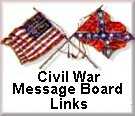Resolved by the Senate and House of Representatives of the United States of America in conference assembled, That the Secretary of War be, and he is hereby, authorized to deliver to the proper authorities of the respective States in which the regiments which bore these colors were organized certain Union and Confederate battle flags now in the custody of the War Department for such final disposition as the aforesaid proper authorities may determine.
This act, passed by the United States Congress in 1905, and signed by President Theodore Roosevelt, returned flags carried by Confederate troops to the Southern States. Among these banners was the First National pattern flag of the Washington Rifles, Company “E” of the First Georgia Volunteer Infantry. The colors were in poor condition, the fabric tattered and torn.
In 1861, forty-four years earlier, the banner’s silk shone brightly, and its canton proudly displayed the painted Georgia state coat of arms. The lovingly sown flag was presented to the Washington Rifles as they prepared to depart for Camp Oglethorpe in Macon. The scene was described in the April 3 edition of the Sandersville Central Georgian:
On Monday previous to their departure, the ladies of Sandersville, with their usually liberality and promptness, prepared a sumptuous dinner in the Court House for the benefit of the Rifles, but of which all were invited to partake. We were not present, but we have heard but one opinion expressed in regard to the manner in which the affair was conducted, and that one is highly creditable to the fair donors. The ladies of our town know how to get up these things, and in the present instance they more than excelled any former public occasion amongst us. After all who chose had partaken of the dinner, an abundance for several days’ subsistence was packed away to be carried with the company. The ladies during the day presented the company with a handsome flag of the Confederate States. Sustained by the hand, and encouraged by the smiles of fair woman, what would not man dare—what would he not achieve?
Business also prevented our hearing the address delivered by Col. J. S. Hook before the company and the public on this occasion. We are told, however, that it was the most felicitous and appropriate; that in patriotic and soul-stirring words he depicted the honor and glory of a life devoted to the defence of one’s country, and said, that while he was conscious it was unnecessary to so speak in this instance, he would exhort them never to permit the flag confided to their keeping by the angel band of women to be tarnished by one unpatriotic act, or soiled by the hand of a foe. The ceremonies were highly interesting, and very creditable to all engaged.
During the retreat of General Robert S. Garnett’s Army of the Northwest from Laurel Hill in July of 1861, many of the flags belonging to the various companies of the First Georgia were stored in wagons. Panicked teamsters jettisoned equipment from entangled wagons as the column worked its way through the Allegheny Mountains, and many wagons were simply abandoned when they became stuck. One such wagon was left behind at a river crossing just north of Kalers Ford, where Colonel Ramsey fought a rearguard action against pursuing Union troops, and where six companies were cut off from the army and forced to wander lost in the trackless wilderness. This wagon contained the banner of the Washington Rifles. As Federal troops crossed the river in pursuit of the Confederates, a soldier of the Ninth Indiana found the Rifles’ colors in the wagon. Climbing atop the wagon, he unfurled the colors and waved it, either to urge on his comrades, or possibly just to show off what he had discovered. The banner was sent north, where it remained in the War Department’s collection of captured flags. It was returned to Georgia as one of the returned battleflags.
The image at the top of this column is from a brochure titled “The Returned Battle Flags,” which was given as a souvenir during the United Confederate Veterans Reunion held in Louisville, Kentucky, in June of 1905. It shows the Washington Rifles flag as it looked when returned to Georgia. The banner, made of silk, continued to deteriorate, but was restored by conservators in recent years. The banner is now part of the collection of the Georgia Capitol Museum in Atlanta. The restored flag can be viewed here.
.jpg)











No comments:
Post a Comment